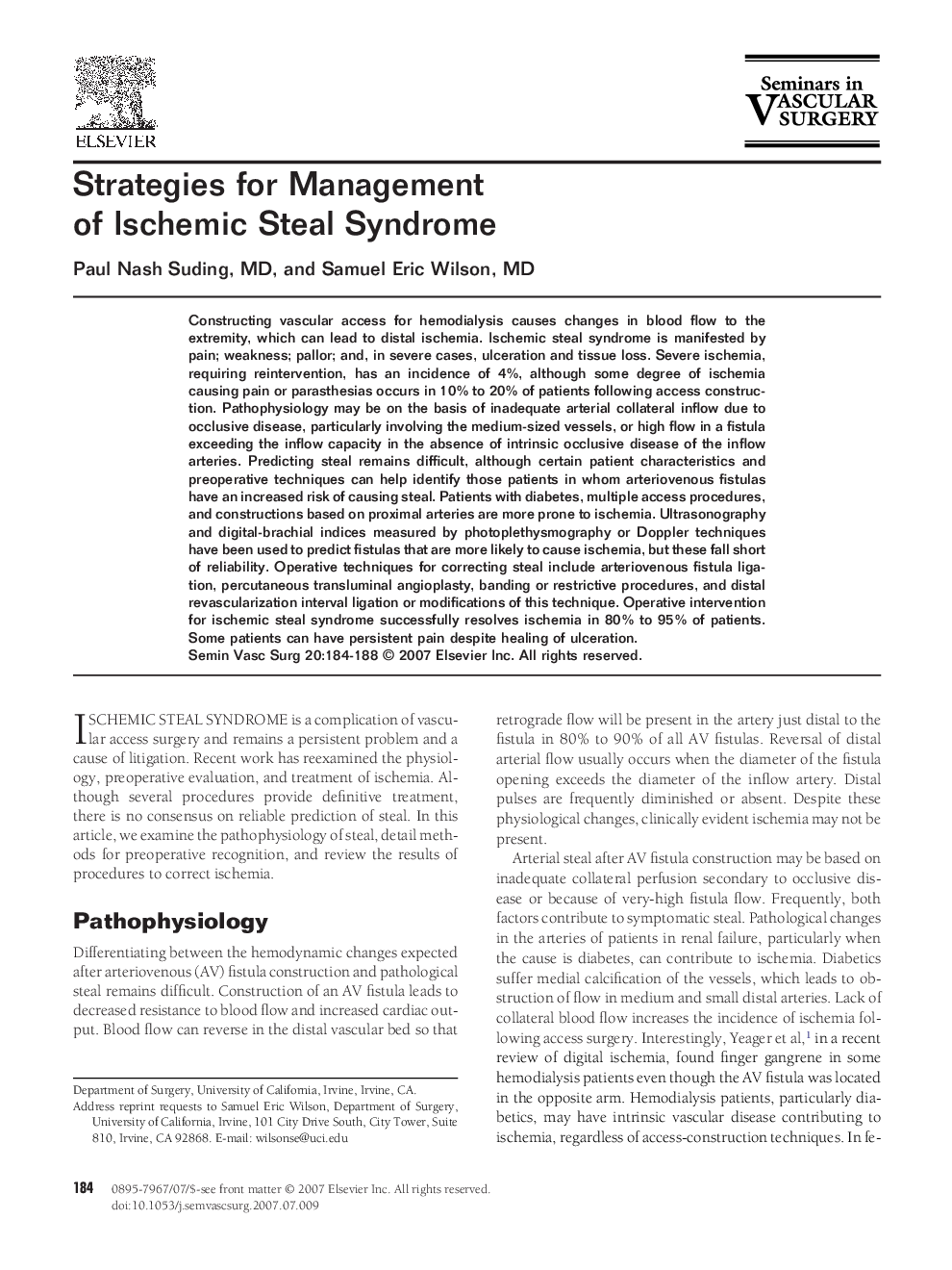| Article ID | Journal | Published Year | Pages | File Type |
|---|---|---|---|---|
| 3026460 | Seminars in Vascular Surgery | 2007 | 5 Pages |
Constructing vascular access for hemodialysis causes changes in blood flow to the extremity, which can lead to distal ischemia. Ischemic steal syndrome is manifested by pain; weakness; pallor; and, in severe cases, ulceration and tissue loss. Severe ischemia, requiring reintervention, has an incidence of 4%, although some degree of ischemia causing pain or parasthesias occurs in 10% to 20% of patients following access construction. Pathophysiology may be on the basis of inadequate arterial collateral inflow due to occlusive disease, particularly involving the medium-sized vessels, or high flow in a fistula exceeding the inflow capacity in the absence of intrinsic occlusive disease of the inflow arteries. Predicting steal remains difficult, although certain patient characteristics and preoperative techniques can help identify those patients in whom arteriovenous fistulas have an increased risk of causing steal. Patients with diabetes, multiple access procedures, and constructions based on proximal arteries are more prone to ischemia. Ultrasonography and digital-brachial indices measured by photoplethysmography or Doppler techniques have been used to predict fistulas that are more likely to cause ischemia, but these fall short of reliability. Operative techniques for correcting steal include arteriovenous fistula ligation, percutaneous transluminal angioplasty, banding or restrictive procedures, and distal revascularization interval ligation or modifications of this technique. Operative intervention for ischemic steal syndrome successfully resolves ischemia in 80% to 95% of patients. Some patients can have persistent pain despite healing of ulceration.
